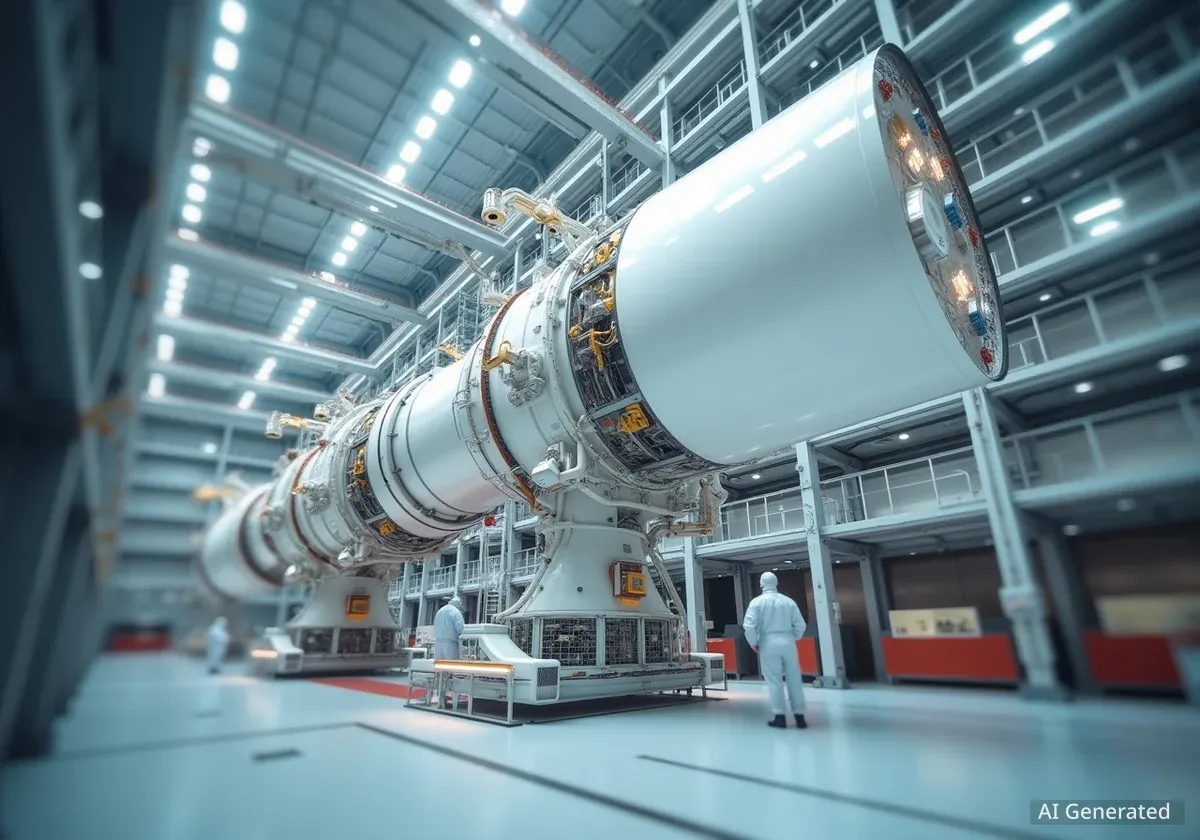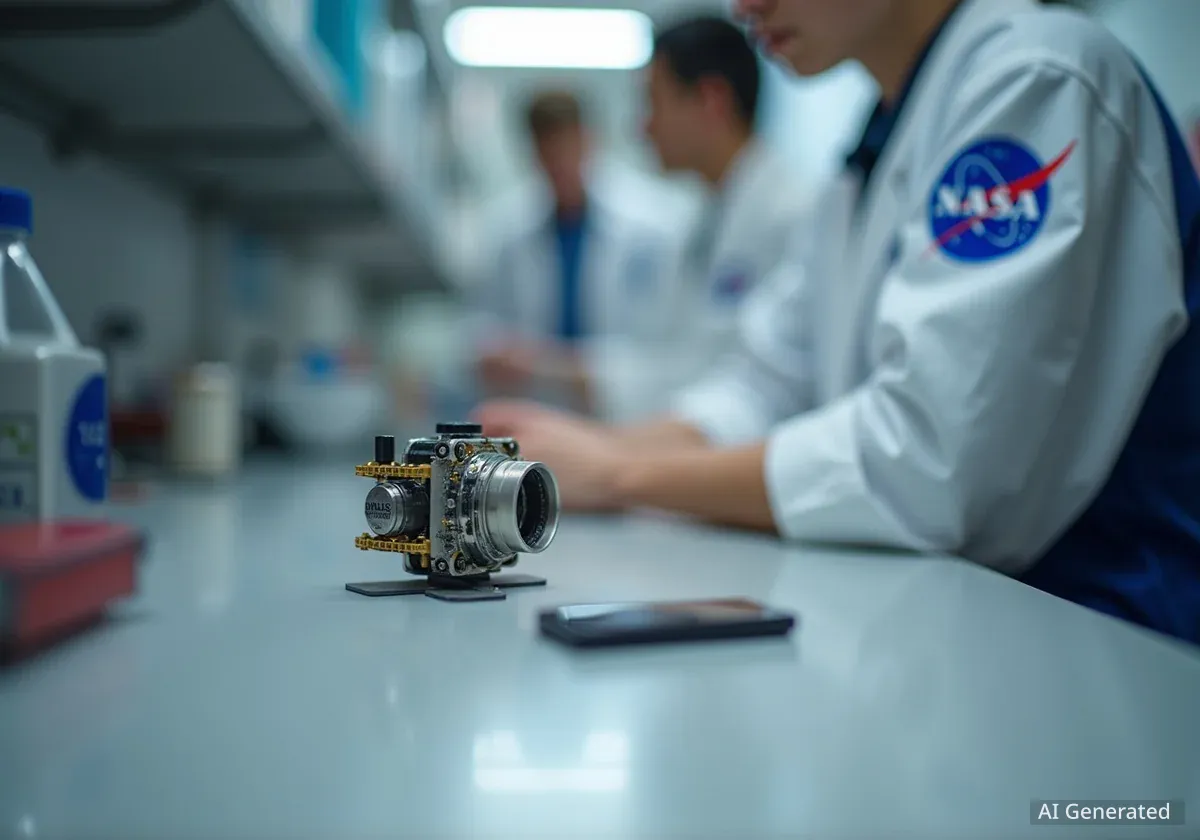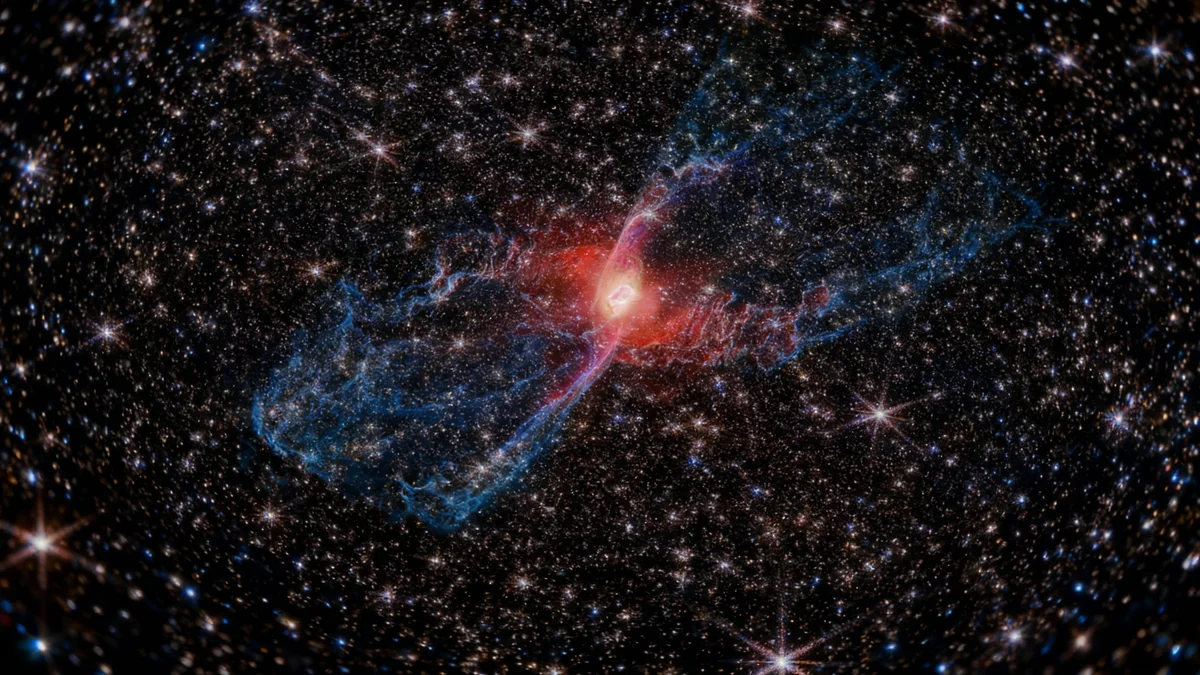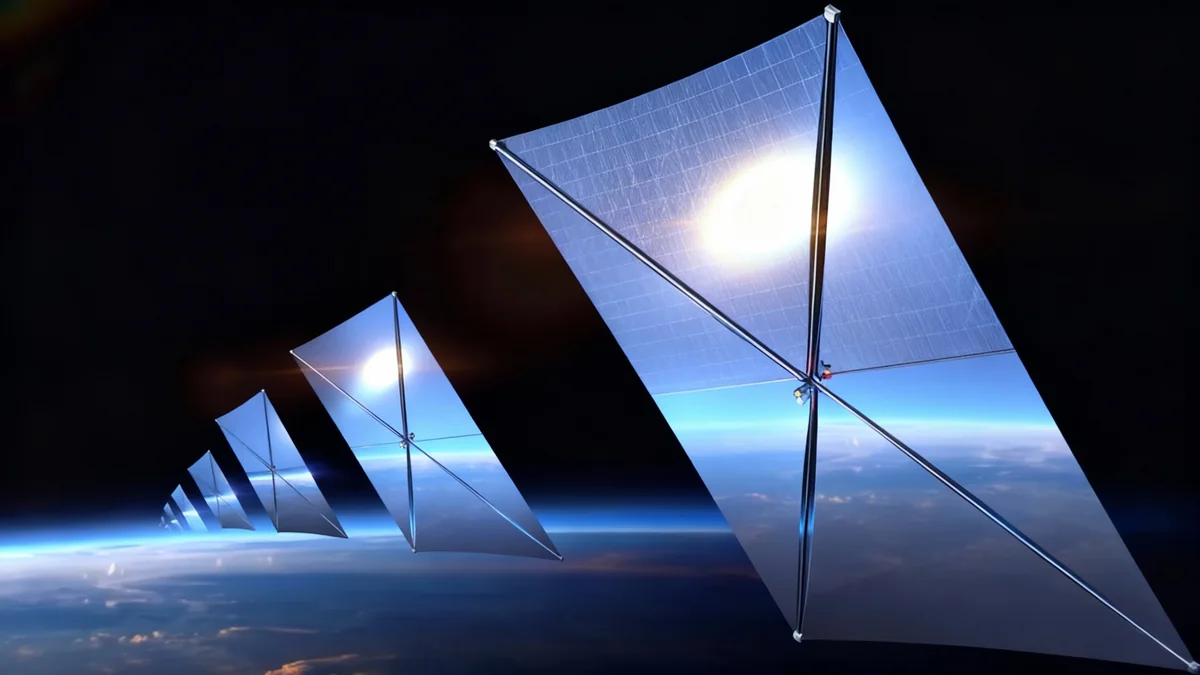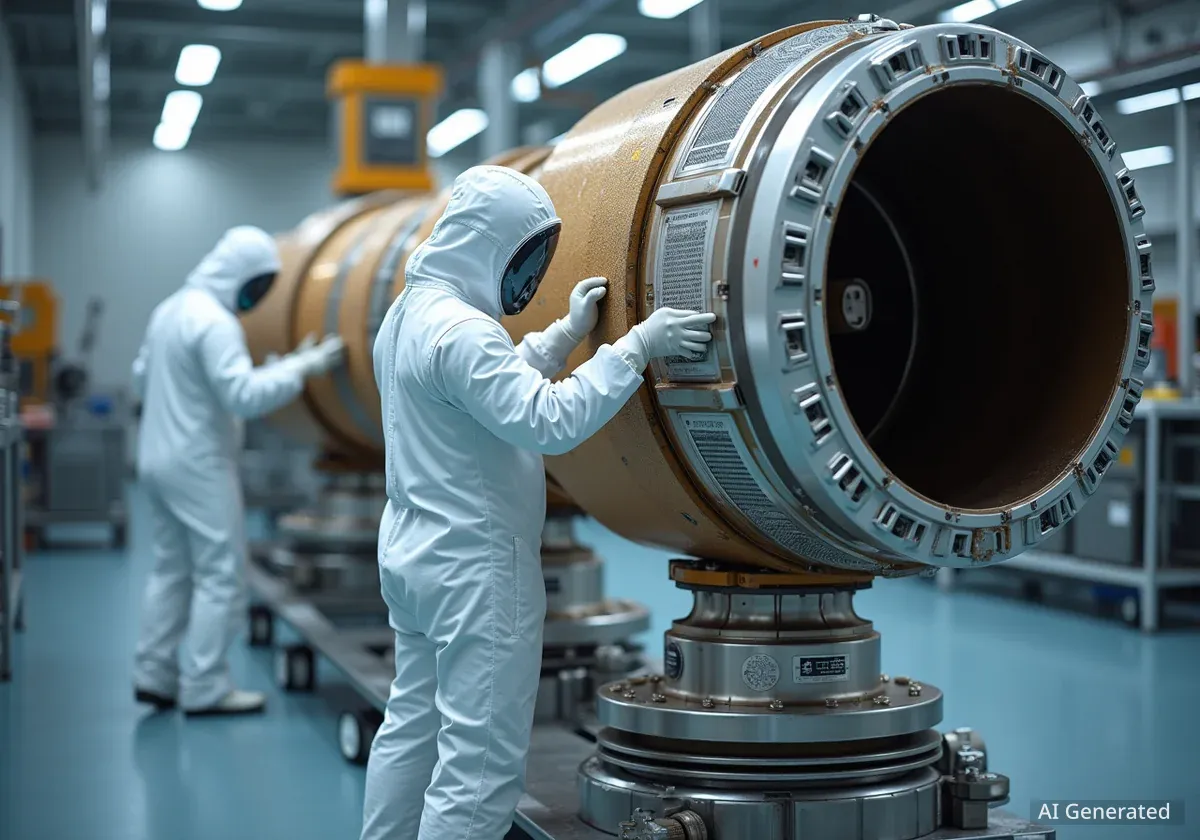NASA is developing its next major space observatory, a mission designed to answer one of humanity's oldest questions: Are we alone? The Habitable Worlds Observatory, planned for launch in the 2030s, will be the first telescope specifically engineered to directly image Earth-like planets orbiting distant stars and analyze their atmospheres for signs of life.
Key Takeaways
- The Habitable Worlds Observatory (HWO) is NASA's next flagship astrophysics mission, following the James Webb Space Telescope.
- Its primary goal is to find and study dozens of Earth-sized planets in the habitable zones of sun-like stars.
- The telescope will use advanced technology to block starlight and analyze planetary atmospheres for biosignatures like oxygen and methane.
- Key challenges for the mission include securing long-term funding, developing ultra-stable optics, and navigating political uncertainties.
A Mission to Redefine Our Place in the Cosmos
Scientists and engineers are laying the groundwork for what they describe as an "Apollo-like moment" in astrobiology. The Habitable Worlds Observatory, or HWO, aims to provide the first concrete evidence of whether planets similar to our own are common or exceedingly rare in the galaxy.
The mission's objective is both simple to state and incredibly difficult to achieve: to capture light from a rocky planet orbiting a star much like our sun and search for the chemical fingerprints of a biosphere. According to NASA officials, this project seeks to address what is arguably one of the most profound unanswered questions in science.
A Successor to Webb and Hubble
HWO builds on the legacy of previous great observatories. While the Hubble Space Telescope brought us stunning images of the cosmos and the James Webb Space Telescope (JWST) peers into the early universe, HWO is tailored for a more specific task: the detailed characterization of potentially habitable worlds within our cosmic neighborhood, roughly 100 light-years from Earth.
Shawn Domagal-Goldman, who leads NASA's astrophysics division, has expressed immense passion for the project. "In any field, there aren’t many opportunities where you get to be a part of something that can literally change the world—and that’s not hyperbole," he stated. He compares the potential impact of HWO's discoveries to the way images of Earth from the Moon shifted human perspective during the Apollo era.
The Technology Needed to Find Another Earth
Detecting an Earth-sized planet next to its star is an immense technical hurdle. A sun-like star can be up to 10 billion times brighter than the planet orbiting it, making the planet's faint light incredibly difficult to isolate. To overcome this, HWO will rely on a sophisticated instrument called a coronagraph.
A coronagraph works like an artificial eclipse inside the telescope, precisely blocking the overwhelming glare from the host star. This allows the faint, reflected light from the planet to be seen and collected. Once the light is captured, other instruments will analyze it to determine the composition of the planet's atmosphere.
Searching for Atmospheric Biosignatures
The observatory will search for specific molecules that are associated with life on Earth. These potential biosignatures include gases like oxygen, ozone, and methane. Finding these gases in the atmosphere of a rocky planet located in the "habitable zone"—the region where liquid water could exist—would be the strongest evidence for extraterrestrial life ever obtained.
"My expectation is that there is life out there, and the question is: How frequent is it?" says Evgenya Shkolnik of Arizona State University, a co-chair of the HWO science team. "It could be very rare. It could be very common. I have no idea. But one thing in astronomy we’ve never done is discover just one of something."
The telescope will also conduct broader astrophysical research, studying dark matter, the evolution of galaxies, and objects within our own solar system. This multi-purpose capability is essential for securing support from the entire astronomy community.
Designing a Telescope for the Future
Engineers are currently debating the final design of the HWO, with two key considerations at the forefront: the size of its primary mirror and its ability to be serviced and upgraded in space.
Precision at an Astronomical Scale
To successfully use its coronagraph, the HWO's mirror segments must be aligned with a precision measured in picometers—trillionths of a meter. This is equivalent to measuring the distance from Earth to the Moon with an accuracy smaller than the width of a grain of rice.
The Debate Over Mirror Size
A larger mirror can collect more light, enabling the telescope to study more planets with greater detail. Teams are considering two main options:
- A 6.5-meter mirror that would fit directly into the payload fairing of current and planned rockets.
- A larger, 8-meter-plus mirror that would fold for launch, similar to the design of the JWST.
While a larger mirror is scientifically preferable, it adds complexity and cost. According to Lee Feinberg, HWO's principal architect at NASA's Goddard Space Flight Center, a bigger aperture makes it easier to statistically determine how rare or common life is. If a large-aperture telescope surveys many Earth-like planets and finds nothing, it provides a powerful statement about the rarity of life.
Learning from Hubble: The Case for Serviceability
A crucial design philosophy for HWO is robotic serviceability. The telescope will operate at the Earth-sun Lagrange Point 2 (L2), about 1.5 million kilometers from Earth. While too far for human servicing missions like those that upgraded Hubble, the plan is to design HWO so that robots can replace and install new instruments in the future.
This approach offers significant advantages. It means the telescope can launch with the best available technology now, with the knowledge that more advanced instruments can be added later. This strategy can accelerate the development timeline and reduce initial costs. "It’s all about doing it less expensively, and the way you do that is to do it fast," Feinberg explained.
Overcoming Terrestrial Hurdles
While the technical challenges are significant, the greatest obstacles for the Habitable Worlds Observatory may be political and financial. Securing consistent, multi-decade funding for a multibillion-dollar project requires sustained political will, which can be difficult to maintain through changing administrations and budget priorities.
Lessons from the Past
NASA has attempted a similar mission before. The Terrestrial Planet Finder (TPF), proposed in the 2000s, was ultimately canceled after disagreements on design and a failure to secure broad support. Planners for HWO are mindful of this history and are working to build a strong, unified consensus around the mission's scope and design to avoid a similar fate.
Former NASA science chief Thomas Zurbuchen cautioned against letting the desire for a perfect instrument derail the project entirely, a lesson learned from the near-cancellation of JWST due to cost overruns. "I’d rather have a HabWorlds that looks at 15 exoplanets than one that looks at zero because I couldn’t afford it," he remarked.
Despite the challenges, the scientific community remains optimistic. The quest to find other Earths is seen as a unifying goal, one that could expand human perspective and provide a beacon of progress. If successful, the Habitable Worlds Observatory will not only change textbooks but could fundamentally alter our understanding of our place in the universe.

